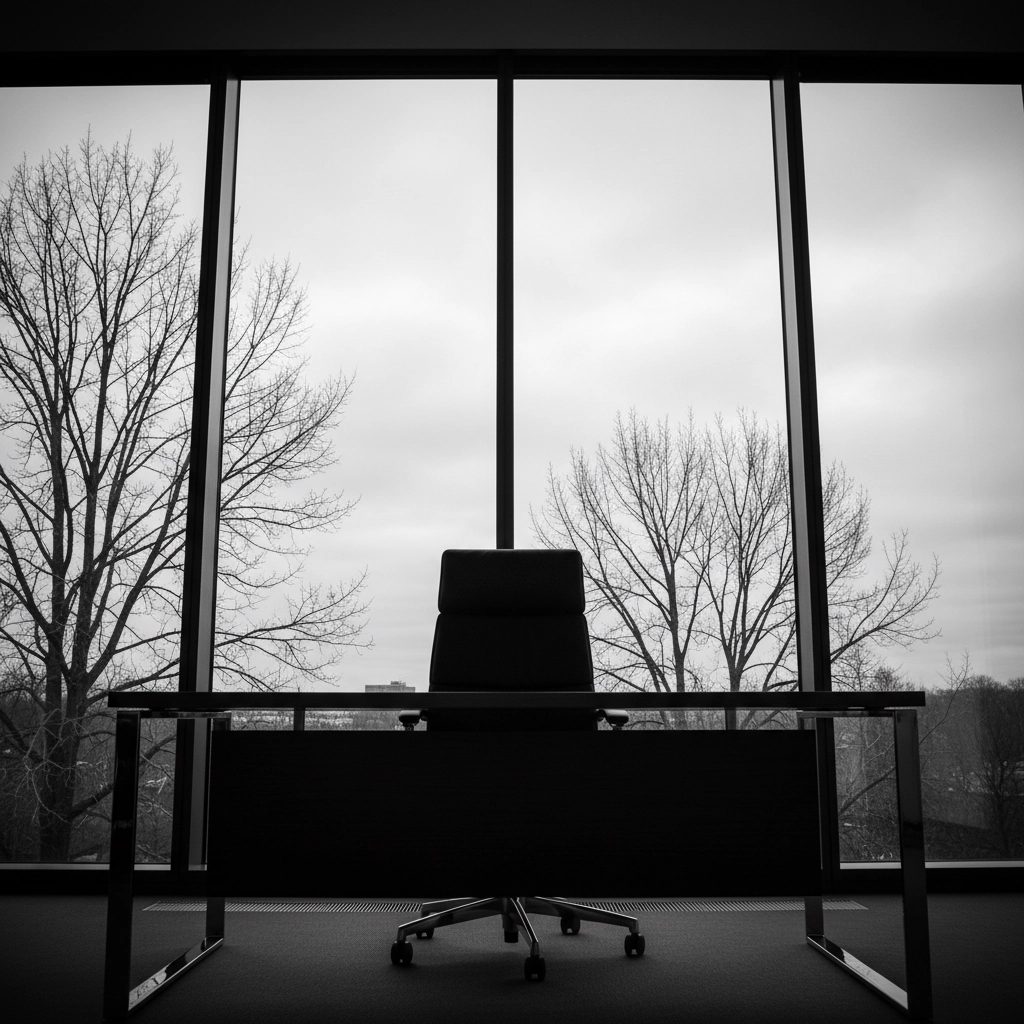Battling Seasonal Affective Disorder: Six Strategies Every High-Performing Leader Needs During the Dark Months
- Mark Mathia

- Nov 8
- 6 min read
Let me be honest about something I've struggled with for years.
Every October in Nebraska, I feel it creeping in. The shorter days, the gray skies, the way 5 PM feels like midnight. Seasonal Affective Disorder isn't just a clinical term for me: it's a yearly reality check that reminds me even high-performing leaders aren't immune to the effects of less sunlight and shifting seasons.
For the longest time, I thought I could just push through it. More coffee, longer hours, grinding harder. Sound familiar? But here's what I learned: ignoring SAD doesn't make you tougher. It makes you less effective. And as leaders, we can't afford to operate at anything less than our best when our teams are counting on us.
So every year, I deliberately up my game. Not just to survive the dark months, but to thrive through them. Because if I'm going to lead others through challenging seasons, I need to model what winning condition looks like year-round.

The Reality of SAD for High-Performing Leaders
Seasonal Affective Disorder affects about 5% of the population, but the numbers climb higher for those of us in leadership roles. Why? We're already operating under intense pressure, managing complex decisions, and carrying the weight of other people's success. Add reduced sunlight and shorter days to that mix, and it's a perfect storm for decreased energy, focus, and emotional resilience.
The symptoms aren't subtle: difficulty concentrating, mood changes, energy crashes, and that persistent feeling of running on empty. For leaders, these aren't just personal challenges: they impact every decision we make, every interaction we have, and every strategic move we execute.
But here's the thing: SAD is predictable. It shows up around the same time every year, follows similar patterns, and responds to consistent interventions. That predictability? It's actually our advantage.
In some cases, SAD can take on a life of its own. It’s crucial to seek proper medical care, including talking with your doctors, therapist, and loved ones. Reach out for medical attention before things spin out of control.
Strategy 1: Light Becomes Your Leadership Edge
The most powerful weapon against SAD is light: specifically, getting it early and getting enough of it.
I've made morning light exposure non-negotiable. Even when Nebraska's November sky looks like concrete, I'm outside within 30 minutes of waking up. Face to the sky, even if it's overcast. The research backs this up: morning light exposure helps regulate circadian rhythms and triggers the neurotransmitters that keep mood and energy stable.
But I don't stop there. I invested in a high-quality light therapy box that sits on my desk during my morning routine. 10,000 lux for 20-30 minutes while I review my priorities for the day. It's not glamorous, but it works.
As leaders, we need to model this behavior. Take that lunch meeting outside when possible. Schedule walking meetings. Show your team that prioritizing light exposure isn't weakness: it's strategic performance management.
Strategy 2: Movement Isn't Optional
When the temperature drops and darkness comes early, every fiber of your being wants to hibernate. This is exactly when movement becomes critical.
Exercise is a natural mood stabilizer and energy booster, but it doesn't have to be complicated. I'm not talking about becoming a fitness influencer. I'm talking about consistent, intentional movement that fights the lethargy that feeds SAD.
For me, it's a non-negotiable morning routine: 20-30 minutes of movement before the day starts. Sometimes it's a strength training session, sometimes it's a walk around the neighborhood, sometimes it's just stretching and bodyweight exercises in my office. The key is consistency, not intensity.
Your team is watching how you handle the seasonal challenges. When you maintain your energy and focus through intentional movement, you're showing them that peak performance is a choice, not a circumstance.

Strategy 3: Fuel Your Brain Strategically
SAD messes with your brain chemistry, and nutrition becomes your counterstrike.
Vitamin D deficiency is strongly linked to seasonal depression. I supplement with vitamin D3 from October through March: it's not optional. But supplementation is just the foundation. I focus on foods rich in omega-3 fatty acids, B vitamins, and antioxidants. Think salmon, leafy greens, nuts, and berries.
Here's what I avoid: the sugar and caffeine roller coaster that promises quick energy but delivers crashes and mood swings. When you're already fighting seasonal sluggishness, these energy spikes and crashes make everything worse.
Your brain is your most important leadership tool. Feed it intentionally, especially when the seasons are working against you.
Strategy 4: Routine Becomes Your Foundation
When everything feels unstable: shorter days, unpredictable weather, holiday chaos: routine becomes your anchor.
I maintain the same wake-up time, the same morning ritual, the same evening wind-down, regardless of what's happening outside. This isn't about being rigid; it's about creating internal stability when external conditions are constantly shifting.
Sleep consistency is especially crucial. SAD disrupts sleep patterns, which compounds every other symptom. I protect my sleep schedule like I protect important meetings. Same bedtime, same wake time, same environment. No exceptions.
Your team needs to see this stability in you. When you're consistent in your rhythms and responses, you provide the steady leadership they need during uncertain seasons.
Strategy 5: Connection Fights Isolation
SAD feeds on isolation. The tendency to withdraw, skip social events, and minimize connection is exactly what makes the condition worse.
I've learned to intentionally lean into connection during the dark months. Regular check-ins with my mentors, coffee meetings with colleagues, family dinners that actually happen. These aren't luxuries: they're strategic interventions against the isolation that weakens leaders.
But here's the leadership component: be vulnerable about your seasonal challenges with your team. Not in a way that undermines confidence, but in a way that normalizes the human experience of seasonal struggles. When you model authenticity about these challenges, you create psychological safety for others to address their own seasonal difficulties.
Connection isn't just about feeling better. It's about maintaining the relational intelligence that effective leadership requires.

Strategy 6: Engineer Your Environment for Success
Your environment either supports your battle against SAD or works against it. I choose support.
I've redesigned my office to maximize natural light. Desk positioned near the window, light-colored walls, mirrors to amplify available light. I've added plants: they don't just look good, they improve air quality and provide a psychological connection to nature when the outdoors feels hostile.
The lighting in my workspace matters too. I use daylight-mimicking LED bulbs that adjust throughout the day. It's a small investment that pays dividends in energy and focus.
As a leader, you have the power to influence your team's environment too. Advocate for workplace lighting improvements, encourage flexible schedules that allow people to maximize daylight exposure, normalize mental health days without stigma. These aren't HR initiatives: they're leadership strategies that support peak team performance.
The Leadership Imperative
Here's what I've learned through years of battling SAD in Nebraska: managing seasonal challenges isn't a sign of weakness. It's a leadership competency.
When you proactively address SAD, you're not just taking care of yourself: you're modeling the kind of self-awareness and strategic thinking that separates good leaders from great ones. You're showing your team that peak performance requires intentional preparation, not just willpower.
The dark months are going to come whether we're ready or not. But leaders don't wait for ideal conditions to perform at their best. We create the conditions that allow us to thrive, regardless of what's happening outside our control.
Every strategy I've shared comes from trial and error, from years of refusing to accept that seasonal darkness had to mean decreased effectiveness. These aren't theoretical concepts: they're battle-tested approaches that work in the real world of leadership responsibilities and high-stakes decisions.
Your Turn to Elevate
SAD affects millions of high-performing professionals, but it doesn't have to define your leadership during the darker months. The strategies that work are simple, practical, and completely within your control.
Start with one strategy this week. Maybe it's the morning light exposure, maybe it's the movement routine, maybe it's the environmental changes. Build momentum with small, consistent actions rather than trying to overhaul everything at once.
What seasonal challenges do you face as a leader? How do you maintain peak performance when the conditions aren't ideal? I'd love to hear your strategies and struggles: drop me a line or connect with me at markmathia.com.
Remember: great leaders don't let seasons determine their effectiveness. They adapt, prepare, and thrive regardless of conditions. The dark months are coming, but your best leadership doesn't have to disappear with the daylight.


Comments